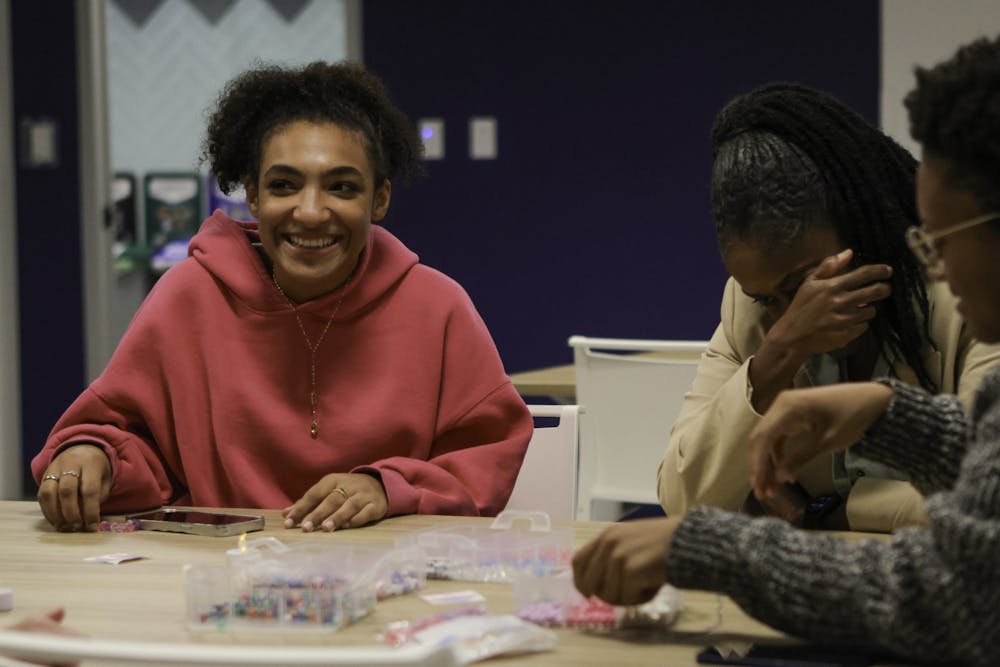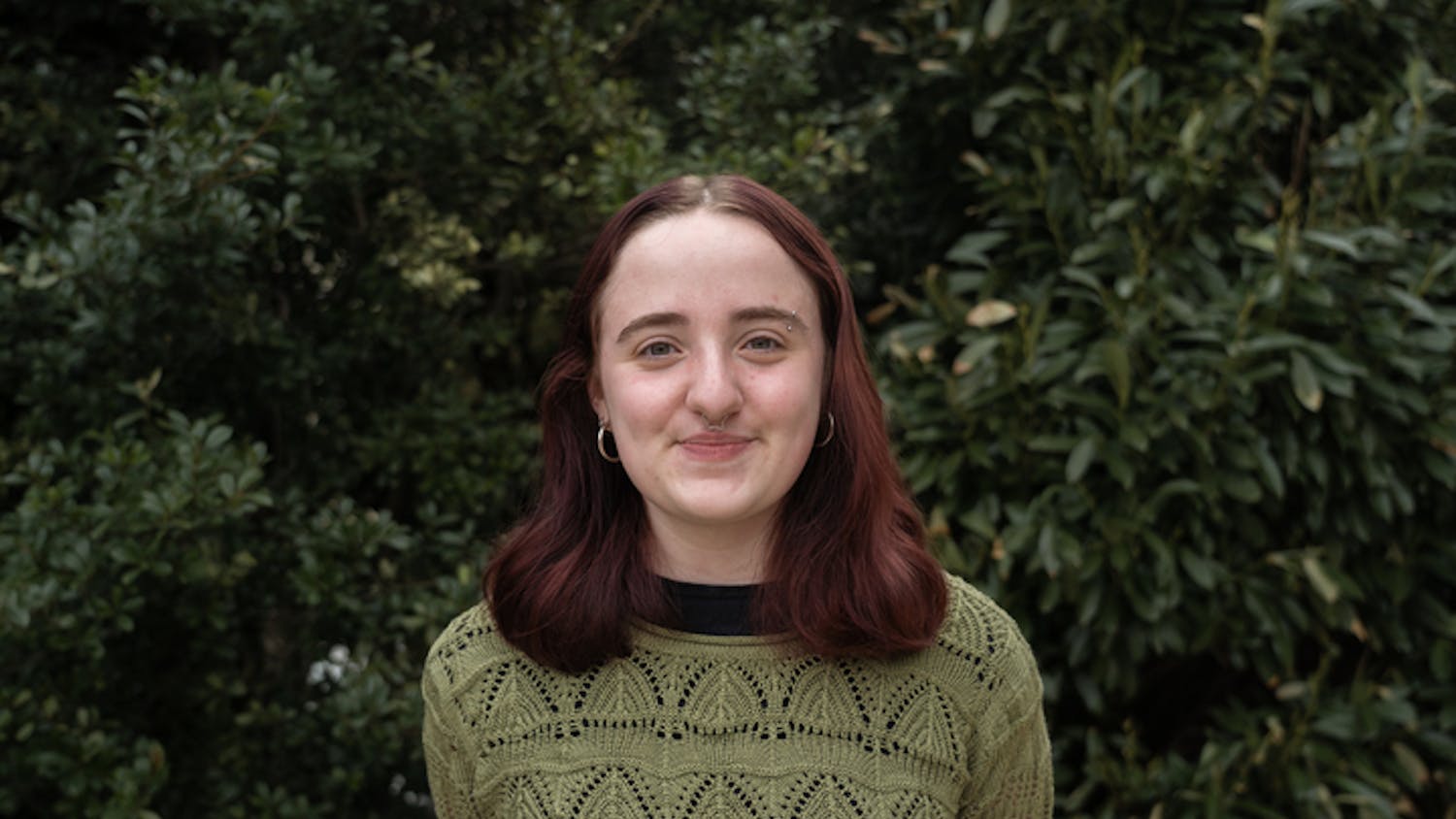American University’s Center for Diversity and Inclusion hosted an art night and vigil on Nov. 20 to share in community, craft and honor over 300 transgender and gender-diverse individuals who were killed this past year.
Transgender Day of Remembrance, now marked annually on Nov. 20, began in 1999 after Rita Hester, a Black transgender woman, was murdered in her own home because of her trans identity.
Khouri Lassiter, CDI’s assistant director of LGBTQ+ Education and Support Programs, explained the gravity of the day and the importance of the vigil.
“The purpose of today is to highlight the violence that trans people face,” Lassiter said.
Lassiter noted the day’s significance in relation to honoring their “transcestors,” a word some have coined to describe trans or gender-nonconforming individuals of the past who paved the way for trans people today.
321 trans and gender-diverse individuals were murdered in 2023, according to the annual Trans Murder Monitoring report from Transrespect versus Transphobia.
The report also showed that 94 percent of those murdered identified as trans women or transfeminine people. Gun violence accounts for nearly half of the reported murders. Most deaths serve as indicative of a distressing trend that links misogyny, racism, xenophobia and transphobia, according to the report.
The report notes that despite an already alarming high trend of annual deaths, the numbers do not account for unreported deaths, those of which likely make up most global instances of transphobic violence.
Lassiter said while it is important, one day is not enough to acknowledge the significance of violence against trans individuals.
“I think we would be remiss if we ignore some of the lived realities that we [the transgender community] face,” Lassiter said.
Lassiter said Wednesday’s event served as a manifestation of their goal to create “intentional spaces” for students who they said should be able to definitively assert: “I know that there’s a space that I can come and process this.”
An intimate gathering offered seating at tables decorated with flameless candles, providing bracelet-making supplies, canvasses, paintbrushes and snacks. Pins and stickers strewn about the room noted messages including “Protect our trans siblings” and “Trans rights are human rights.”
Music carried moments of silence, and a PowerPoint presentation ran at the front of the room, showcasing the names, pronouns, ages and pictures of the lives lost this past year.
Robin Adams, director of CDI, spoke of an ever-present need for a strong community that fosters strong relationships.
“Community is usually an anchor for most of us and community builds connection,” Adams said. “Connection to me is like leaves on a tree.”
Adams said she wants to see more leaves grow on her own tree, describing outreach efforts to students who may feel unsure about CDI.
“We’re trying to understand, for the students we don’t serve, ‘Why?’” Adams asked. “The world constantly changes and expands; the student body constantly changes and expands. We have to do that with our students.”
Just as the vigil offered space for reflection, Lassiter said it also offered an opportunity for decompression. Lassiter said they wanted the vigil to embody a moment of simply being with others.
Jordyn Williams, a sophomore in the School of International Service, said the event felt like an overdue break from her classes and three jobs, one of which being the undergraduate logistics event coordinator for CDI.
Williams said she spent her time at the event decorating a personalized makeup bag and crafting jewelry. As the event came to a close, she gifted Adams a beaded friendship bracelet she had been meticulously working on for the past hour.
“The blue matches your aura today,” Williams said as the two exchanged smiles and laughter.
This article was edited by Payton Anderson, Maya Cederlund, Tyler Davis and Abigail Turner. Copy editing done by Luna Jinks, Sabine Kanter-Huchting and Nicole Kariuki.





